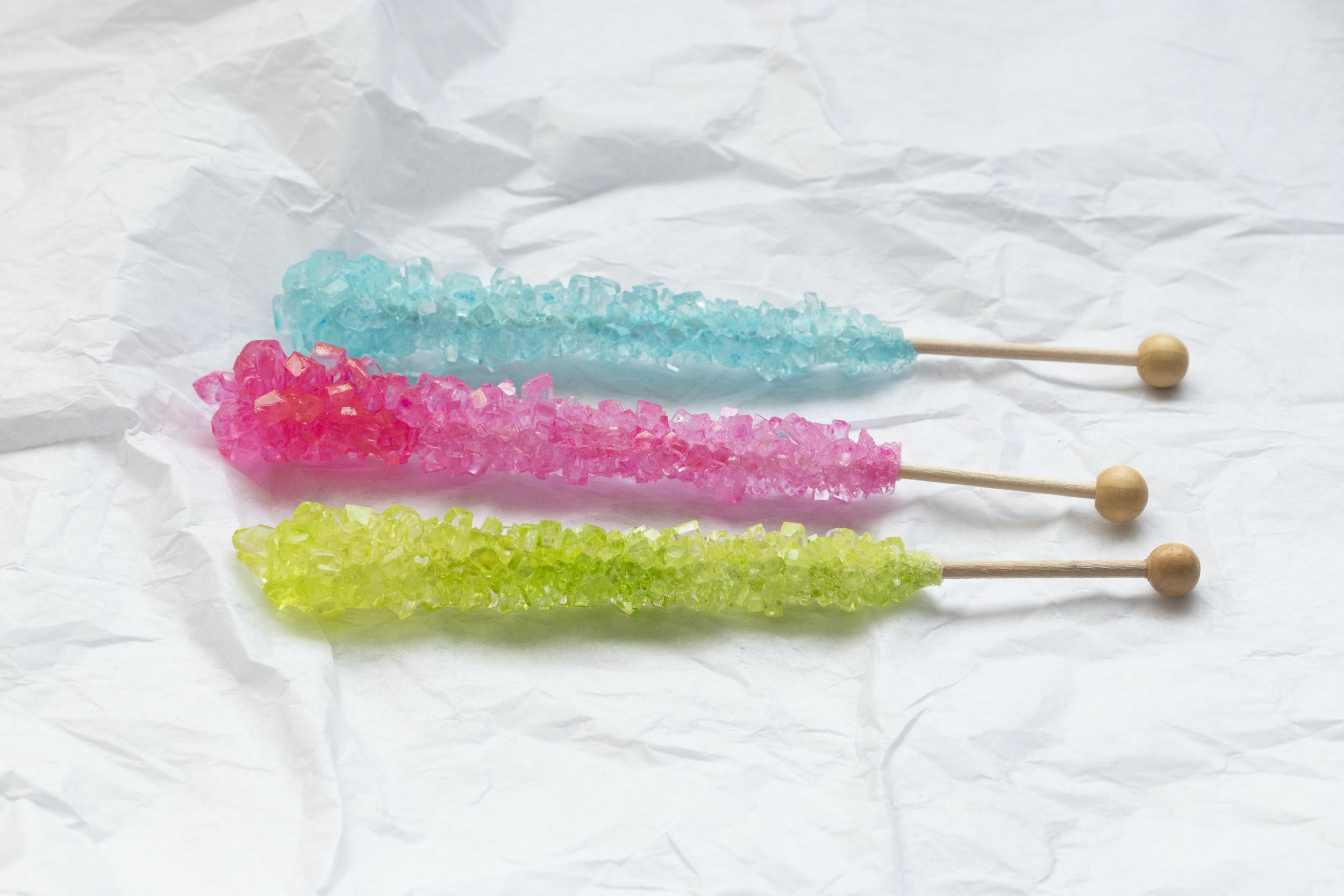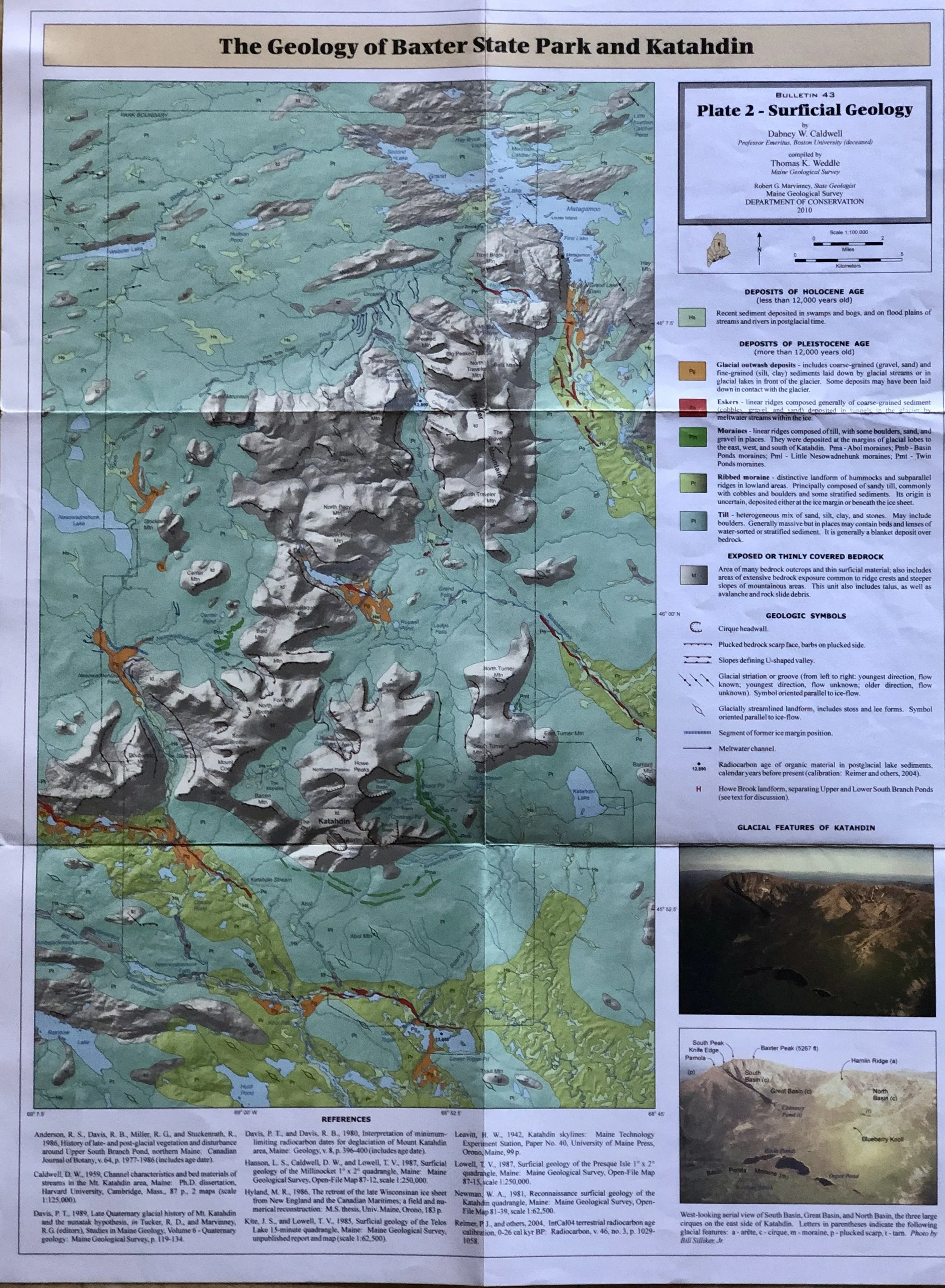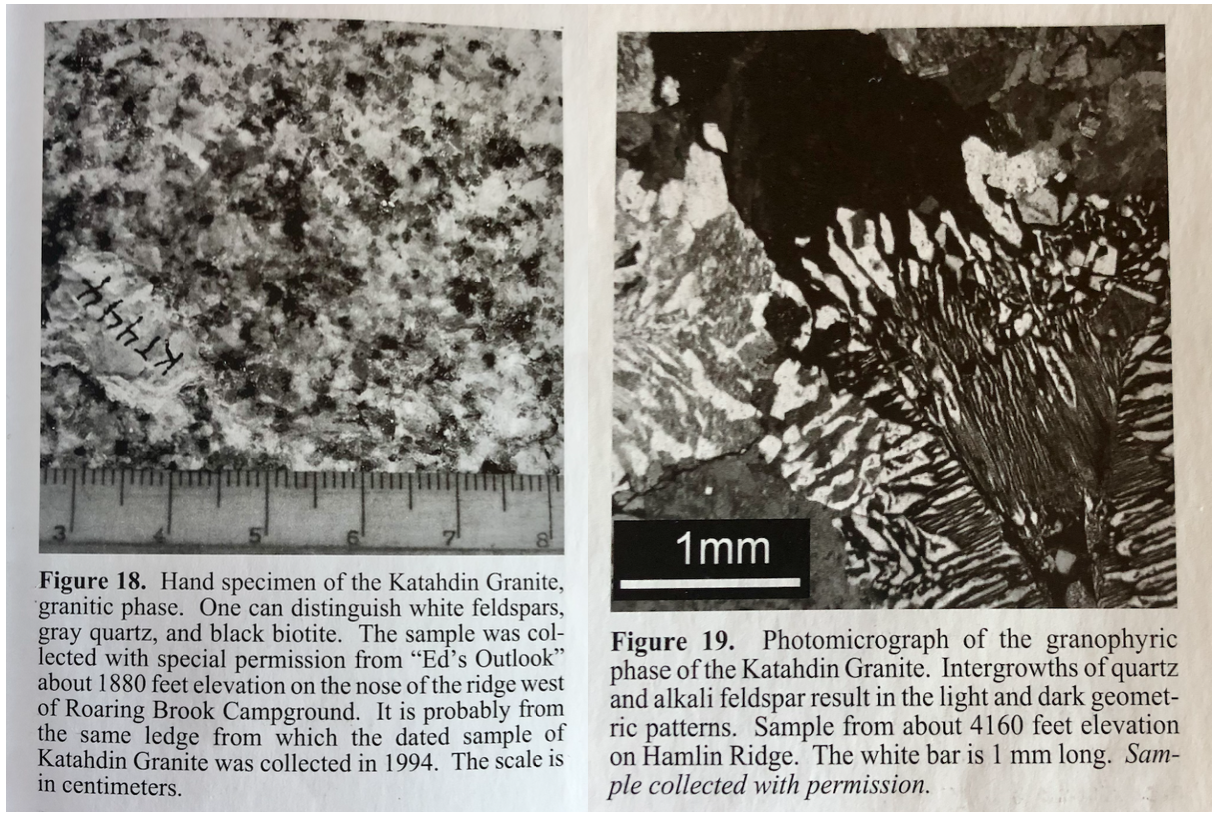
Scaling Rock Candy Mount Katahdin
You are looking at a miniature rock candy version of Mount Katahdin in Maine.
You’re going to learn about another property of sugar
and how this principal explains
why the rocks at the top of Mount Katahdin are a different color than those at the bottom.
Once finishing the quiz, you will be given water to pour over the rock candy to simulate the erosion Mount Katahdin has been experiencing throughout time.
Click on the first 3 images for video explanations!
What is Rock Candy?
Rock candy is made up of sugar crystals and food dye. The sugar crystals slowly build up on the wooden sticks.
What is a crystal?
A material where the atoms are in a rigid symmetrical configuration.
How do crystals form?
Crystals form really slowly over time. The atoms require the right conditions to be able to stack and arrange themselves in a crystal lattice.
What is Mount Katahdin made of?
Mount Katahdin is mostly made up of granite.
It was formed when a magma chamber cooled.
The mountain range it is a part of, was created when a land tectonic plate collided with one from the ocean.
Why are the rocks at the top a different color?
The granite phase at the bottom is indicative of liquids from the inside of the magma chamber.
The bottom and middle of Katahdin are grey, with a mix of salmon pink as they cooled quickly.
The summit was close to the roof of the magma chamber. It cooled very slowly trapping water gas bubbles. Quartz, feldspar and other crystals had time to form in those bubbles giving the summit its red color.
-
Showcasing the beauty of natural phenomena through multiple angles is imperative to reinforcing what we know. The exhibit would showcase the breadth of sugar packing through an inorganic lens and how it differs from other geological crystal/rock formation. In order to do so, a model of the Mt. Katahdin mountain range will be created with rock candy.
-
Five 2D wooden frames, reinforced with metal, of the mountain range will be spaced next to one another to create a 3D model.
The tallest frame will trail along starting from Roaring Brook Campground, up the Pamola peak, across the knife’s edge trail to Baxter peak, and down to Chimney pond: this magnificent trek across the Mount Katahdin mountain range will be scaled down and made of red rock candy.
The subsequent 4 slices made of pink rock candy will follow the mountain range’s topology both forward and backward for 2 slices.
The use of red and pink rock candy reflects the nature of the geology of the mountain range. Due to a different cooling processes, rocks on the top of the mountain are redder than those at the bottom, in part because of different crystal formation.
Signs around the exhibit will explain the different processes required to form crystals and the rocks found at Mt. Katahdin.
A 1:3 ratio of water to sugar is required to create rock candy.
Both are heated together and then poured in metal barrels that contain the wooden frames, where the mixture cools slowly attaching and growing on the frame.
The desired food dye is added as the mixture cools. The crystals will take weeks to grow as the sugar molecules slowly order around one another and come out of the solution.
Once done growing, the frames will be put on stands, inverted and placed outside for viewing pleasure.
-
https://www.maine.gov/dacf/parksearch/PropertyGuides/PDF_GUIDE/KatahdinIronWorks.pdf
https://www.thespruceeats.com/rock-candy-521016
https://sketchfab.com/3d-models/mount-katahdin-map-maine-135000-scale-6c03c48866144bbcbe116f0032a362ee
https://www.youtube.com/watch?v=D0lHaTqX7Vg
A Guide to the Geology of Baxter State Park and Katahdin by Douglas W. Rankin and Dabney W. Caldwell
The Amazing Story of Maine by Leon Harold Tebbetts




